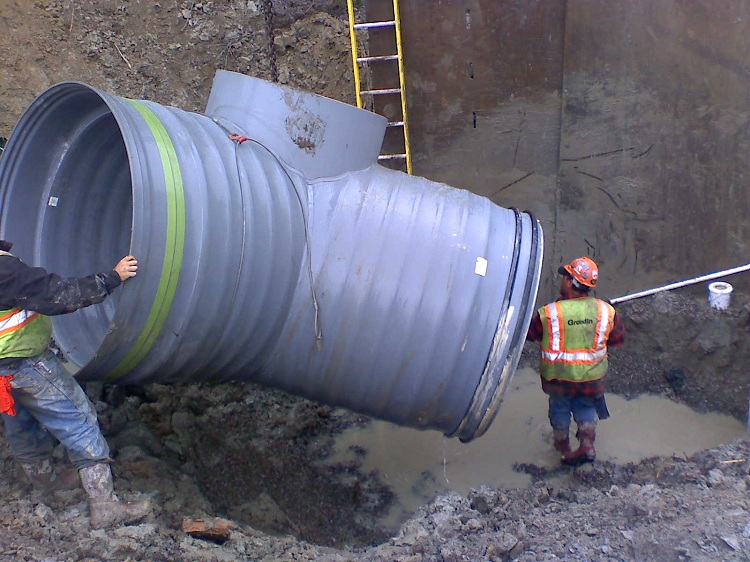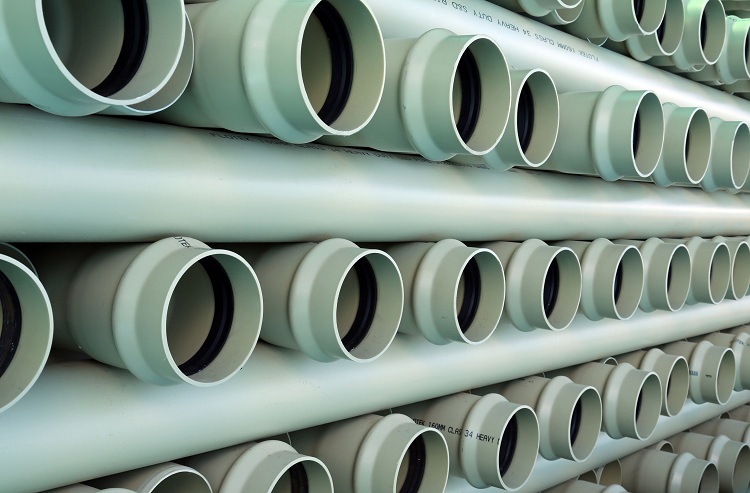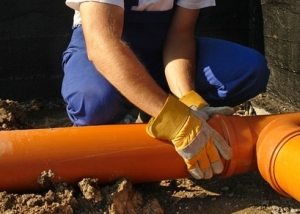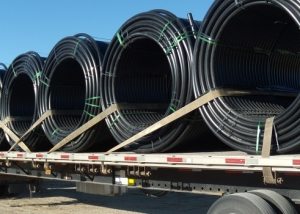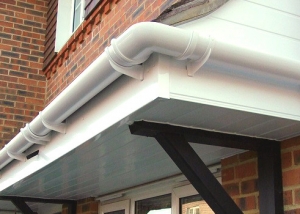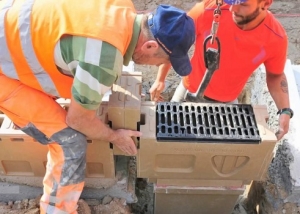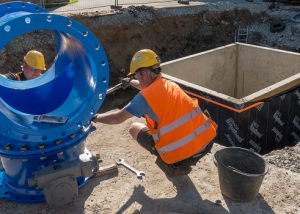Sewer pipes, like any others, are produced in various sizes and have different purposes. A high-quality home pipeline project always includes at least several varieties of sewer pipe diameters. Choosing the right pipe diameter is just as important an aspect of a plan as calculating the length of a sewer, the number of turns and slopes of a system.
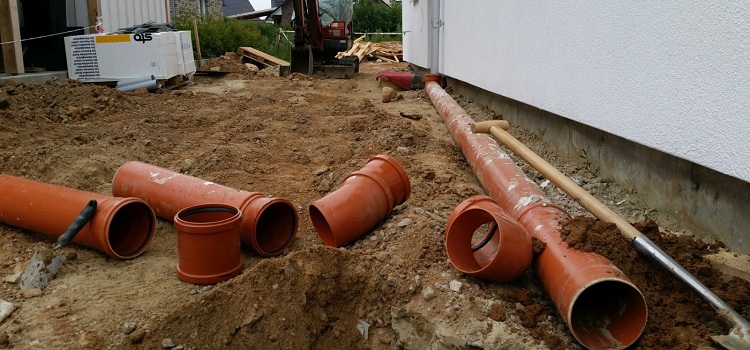
For different types of sewers, pipes of various diameters are necessary, the calculation of this indicator must be performed
Content
What are plastic pipes for sewage?
The fact why plastic products are most often used for the installation of stock systems is understandable to anyone who has ever faced a similar task. They are lightweight, mobile and inexpensive, and also significantly outperform some types of metal (for example, cast iron) in terms of strength characteristics. A particularly important factor in favor of plastic, which relates specifically to sewer networks, is inertness to aggressive acidic environments. The concept of "plastic" actually includes many varieties of thermoplastics or their combinations, but there are several options for products that are widely sold, namely:
- From polyethylene (PE): high pressure (LDPE) - used for the internal wiring system, low pressure (HDPE) - a higher-strength material, even laying in trenches is possible.
- From polyvinyl chloride (PVC);
- From polypropylene (PP).
The type of pipe material is selected individually, depending on the purpose of the system. If you need to build wiring inside an apartment or house, polypropylene is the best choice. It perfectly tolerates any temperature (working - up to + 70С, due to which it has become popular even in the field of heating systems), which will not be superfluous if waste water from household appliances gets into the sewer. More budgetary polyvinyl chloride products are able to withstand lower temperatures (up to + 60 ° C, subject to a short-term increase), so they are suitable for mixed-type drains.
In addition, pipelines for sewage can be smooth-walled, corrugated or profiled. In the latter case, the inner wall will be smooth, and the outer - ribbed. Such products have the best performance characteristics: they have ring stiffness of the corrugation, but are not so prone to blockages. Profiled pipes are mainly used for laying in the ground.
Diameter of sewer pipes: product range
Data on the diameter of the sewer pipe is usually applied on the product labeling. The diameter indicator is placed next to the wall thickness data (for example, 160 * 4.2 - means that the diameter of this product is 160 mm and its wall thickness is 4.2 mm, respectively). In this case, the cross-sectional index is usually indicated external, and in order to calculate the internal, it is necessary to subtract the wall thickness index from the first number.Tabular data are usually rounded, so in the case of the above example, the inner diameter will be indicated as 150 mm, not 151.6 mm.
The size range of sewer pipe products starts from 20-25 mm. The maximum diameter depends on the type of product (corrugated or smooth) and the material of its manufacture. It is impossible to meet a smooth polyvinyl chloride pipe with a cross section exceeding 630 mm, while the diameter of profiled products can reach 1200 mm.
So, the indicators of the diameter of the plastic sewer pipe are as follows:
- elements with a diameter of 16 mm to 25 mm. The main field of application is the removal of wastewater without particles of dirt from dehumidifiers, ventilation devices, air conditioners and other types of technological equipment. In fact, pure distilled water passes through the effluent;
- products with an internal cross section of 20 to 32 millimeters. Practically not used in the field of sewer systems. More suitable for laying pipelines of water supply;
- pipes with an inner diameter of 50 to 100 millimeters. The most common size used for the design and construction of home sewer networks and wiring. Products with a size of 60 mm can be used as a horizontal “sunbed”, to which up to three devices are connected (excluding the toilet). If the number of devices increases to five, a “lounger” with a minimum size of 75 mm is used;
- pipes with an internal cross section of 100 mm or more. They are used to create large general-purpose engineering networks, as well as to equip industrial enterprises. In private construction, they can be used for the construction of the outlet drain pipe, as well as in the design of drainage pipelines.
When buying plastic sewer pipes, it is worth considering the moment that such products, unlike simple water pipes, are produced only in the form of segments. Their length can be 50, 100, 200 cm and so on. The maximum length of one segment is 600 cm. For long routes, it is possible to produce pipes up to 12 m, the manufacture of longer pipes is possible only by individual order.
What pipe diameters are used most often?
Sewer pipes (plastic) are produced with a rather large “take-off” in diameters. The most common size - 40-50 mm - is used to divert sewage from sanitary equipment in kitchens or bathrooms (sinks, bathtubs). An exception is the pipes used for the installation of toilets. Toilets are connected to the system using pipes with a diameter of 100 mm.
The following factors can explain such requirements for the diameter of the sewer pipe for installing the toilet:
- At the time of flushing, a large amount of water passes into the pipeline, and in a very short time.
- When using large diameter pipes, the risk of sewage blockages is reduced.
In addition, the absence of the need to use a large-diameter pipe when connecting a sink or bath is due to the presence of a protective grill at the drain.
In the event that there are several household or plumbing fixtures in the bathroom, it is not necessary to install a pipe with a cross section of 200 mm or more. The total permeability of the sewer channel is equal to the permeability of its bottleneck, so 100 mm will be more than enough.
Helpful advice! When choosing the diameter of a plastic pipe for sewage, you should also pay attention to the presence of appropriate connecting elements. For example, for products with a cross section of 75-90 mm, choosing a fitting is quite problematic.
According to SNiP 2.04.01085, the diameter of the pipe for each type of drain must be calculated according to the rules.But for standard household structures, it is not necessary to resort to complex calculations. Recommended sizes for various plumbing fixtures are shown in the table.
Table 1
| Type of plumbing fixture | Minimum Inner Diameter (in mm) | Inner Diameter Maximum (in mm) | Grade indicator |
| Toilet bowl | 100 | 110 | 1:20 |
| Bath (or shower) | 40 | 50 | 1:30 |
| Bathroom Sink | 30 | 40 | 1:12 |
| Kitchen sink | 40 | 50 | 1:36 |
| Bidet | 30 | 40 | 1:20 |
| Drain from the bathroom (combined - bath + shower + sink) | 50 | 50 | 1:48 |
| Washing machine or dishwasher | 25 | 25 | 2 cm for every 100 mm |
| Central sewer riser | 100 | 110 | — |
| Wiring multiple pipes | 40 | 50 | — |
| Riser bends | 65 | 75 | — |
| Outdoor sewage | 160 | 200 | — |
The table shows the optimal performance for plastic pipes. Dimensions may vary at your discretion, the main condition is that they should not be smaller than those indicated in the first column.
Rules for the device of sewage from plastic pipes
Rules to be considered when constructing a sewer network:
- In order for the water not to stop and not stagnate in the drains, it is important to observe the slope of the pipes (nominal data are indicated in the table above).
- Rotations of 90 degrees in the system are undesirable. When such a need arises, the turn is arranged from two corners, each of which will be 45 degrees.
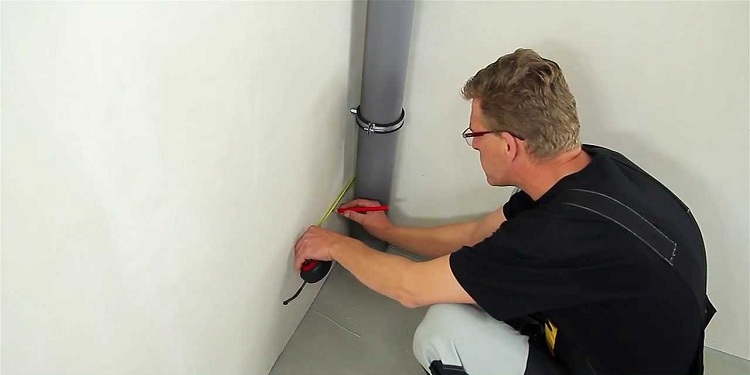
Sewer pipes must be laid, observing the slope to the riser, then the water will leave completely, and the formation of blockages will be minimized
Important! If there are too sharp turns in the sewer, there is a danger of clogging, which is very problematic to clean because of the obstruction of the cable.
- As you move toward the riser, the diameter of the plastic sewer pipe must either remain constant or gradually increase. The system should not be narrowed, as in such places accumulations of dirt form very quickly.
- Near each branch, it is necessary to install a special fitting audit (equipped with a cleaning hole). This measure is again aimed at avoiding blockages. Revision can not be installed if some device is connected nearby and can be easily disconnected from the system.
- When designing sewers in bathrooms of a combined type, plumbing is arranged according to the following principle: the toilet should be closest to the riser. Otherwise, the waste entering the sewer will partially remain on the branches, which will cause an unpleasant odor.
- Plastic is light and thin, so it is difficult to absorb vibrations and vibrations. To avoid constant noise from the sewer, the pipeline can be placed in a foam shell or a special box. This measure will also help mask sewer pipes.
- To fix the drain in a certain position, plastic clamps and latch holders are used. The neck of each pipe must be fixed with a clamp. On horizontal sections of the channel, the fastening elements should be located at a distance of at least 50 cm. A more accurate calculation is one fastening every 10 diameters of the product.
These provisions will help make the operation of the sewer system more durable and comfortable.
Top tips for choosing sewer pipes
In order not to make a mistake when choosing the diameter of sewer plastic pipes, the following recommendations should be considered:
- Plumbing devices through which only water passes can be connected to the sewage system using products with a diameter of 40-50 mm.
- The maximum diameter of pipes in a standard domestic sewage system is 100 mm (toilet bowl and sewer riser). This rule does not apply when many devices are connected to the system.
- In addition to the dimensions of the pipeline, attention should be paid to the material of its manufacture: it must be borne in mind that any sewer system is prone to frequent clogging.In this regard, plastic pipes will be in a winning position, since dirt does not settle on their walls as much as on metal, and they are easier to clean.
- When installing a sewage system in an apartment building, risers with a maximum width of 100 mm (if there are no more than 5 floors) and 150 mm (if there are more than 5 floors) can be used.
- If you want to organize a section of horizontal sewage that connects several risers and access to the well, pipes with a diameter of up to 200 mm can be used.
- When replacing cast iron pipes with plastic, you can take products with a diameter smaller by a step (for example, 50 mm changes by 40 mm). This is explained by the fact that the plastic surface is much slower covered with dirt, i.e. the lumen is not "overgrown."
At first glance, the installation of sewage systems is no different from the installation of a water supply system. However, in solving this problem, a huge number of nuances should be taken into account, ignorance of which can lead to unstable runoff operation and even an emergency. To avoid this, it is worth approaching the installation of sewage with attention and responsibility, and the first step will be the correct determination of the cross-section of the pipe.
